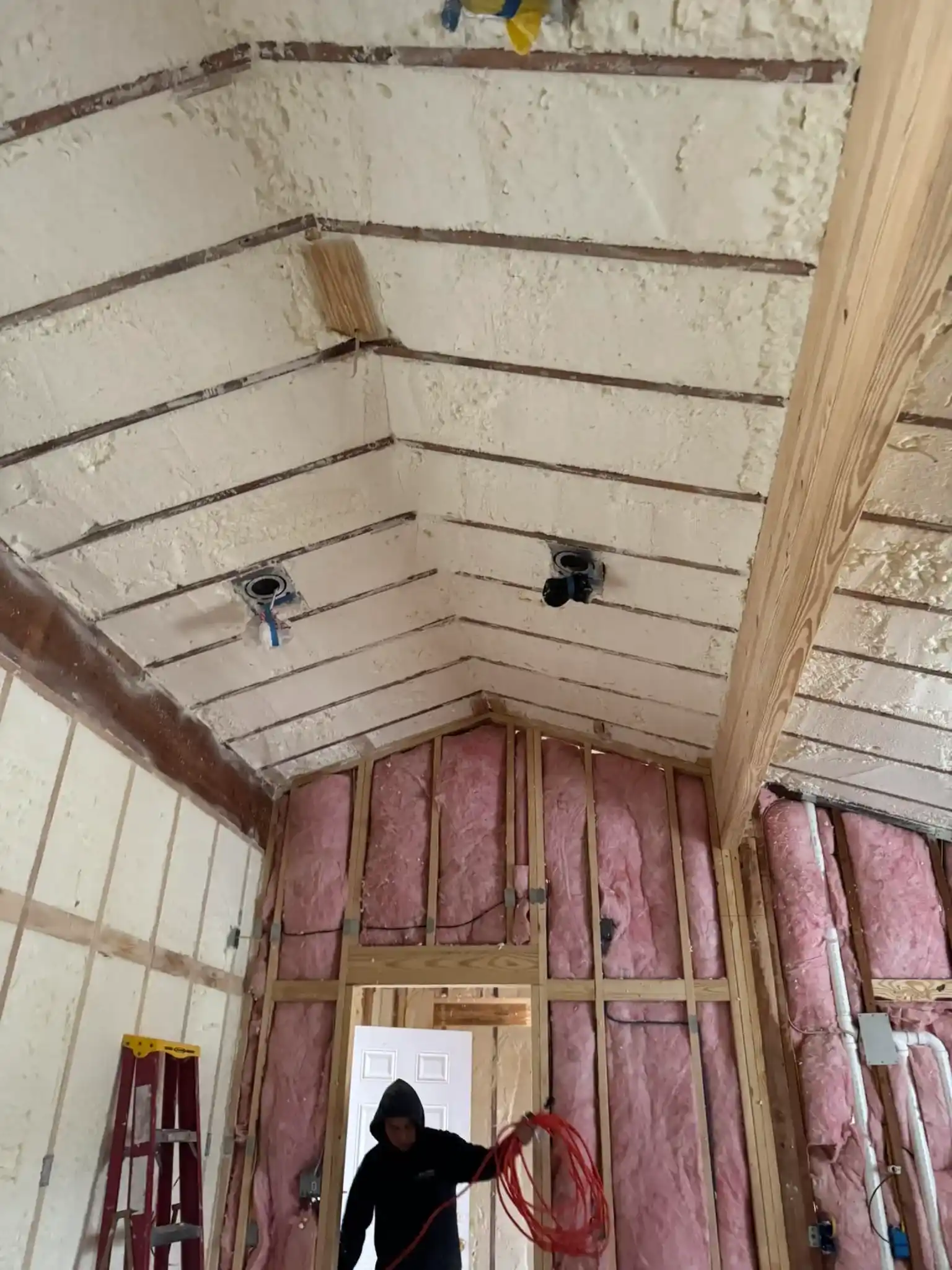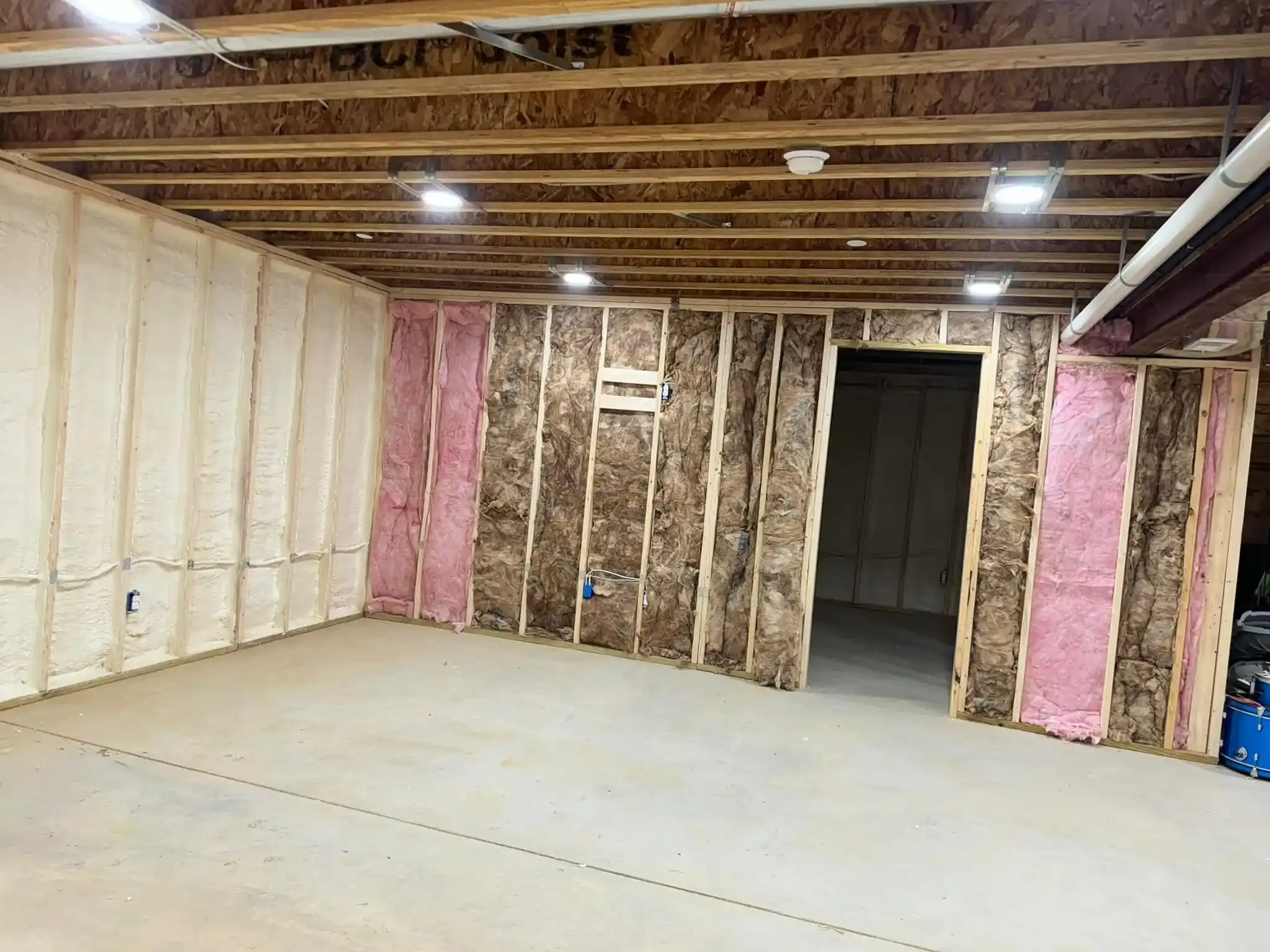
Picture walking into a newly built home in Easton, perfectly quiet, comfortable year-round, and with energy bills that don’t make you flinch. That’s the experience high-quality new construction insulation delivers. It protects your investment, creates a healthier indoor environment, and supports a more sustainable lifestyle for you and your family. Whether you're building your dream home or managing a residential project, this is where comfort meets long-term value for Easton and surrounding areas.
New home insulation should do more than meet code. It should create a tight seal that keeps your indoor air where it belongs and outside air out. Spray foam insulation is one of the most effective choices for new builds because it expands into every crevice, reducing air leaks and thermal transfer. Compared to traditional options, spray foam delivers superior performance in both hot summers and cold winters.
In Easton, where temperature swings are common, the right insulation improves comfort and can lower monthly energy costs by up to 20%. It also helps reduce allergens and dust, making it a smart choice for families. Choosing the best insulation for new homes ensures long-lasting performance and fewer maintenance concerns.
Applying spray foam insulation in new construction is a streamlined process. It starts after the framing and electrical work are complete but before drywall installation. The foam is sprayed directly onto walls, roofs, and crawl spaces where it quickly expands and hardens into a tight barrier.
This process seals every gap, forming an airtight envelope around the home. Closed-cell foam adds structural strength, resists moisture, and provides high R-value per inch. Open-cell foam offers flexibility and sound dampening, which is great for interior walls. The result is a fully insulated space designed to perform well from day one.
Spray foam insulation can be applied throughout a new home build:
Materials used include both open-cell and closed-cell polyurethane foam. These offer different benefits depending on the location and need, from noise control to moisture resistance.

Comparison: Open-Cell vs Closed-Cell Foam
Feature | Open-Cell Foam | Closed-Cell Foam |
R-Value per Inch | ~3.5 | ~6.5 |
Moisture Barrier | No | Yes |
Cost | Lower | Higher |
Sound Dampening | High | Moderate |
Structural Support | No | Yes |
Spray foam doesn’t sag or settle over time like fiberglass or cellulose, making it a reliable option for long-term insulation performance.
Using the right tools ensures proper installation and performance. Equipment includes specialized spray rigs, heated hoses, and proportioning machines that mix foam components accurately. Safety gear like full-face respirators and protective suits is required during application.
Polyurethane foam used in new construction insulation comes in two main forms: open-cell and closed-cell. Each is applied with precision to meet specific energy code requirements and design goals. The result is a sealed, efficient home ready for occupancy.
Easton experiences humid summers and chilly winters. That mix demands insulation that handles both heat and moisture effectively. Spray foam meets those needs by creating a thermal and moisture barrier, essential in this coastal climate.
Builders and homeowners in Easton are looking for durable, high-performance solutions. New construction insulation using spray foam is a smart investment in year-round comfort and reduced utility bills.
Planning a new build? Get high-performance insulation from start to finish. Call Peninsula Insulation, LLC at (410) 770-2624 to schedule your project or get a free estimate today.
Spray foam insulation offers the highest performance for energy efficiency, moisture control, and longevity.
Spray foam can last over 30 years without degrading when installed properly.
Yes, it can be applied to attics, walls, crawl spaces, and other structural areas during construction.
Once cured, spray foam is inert and does not release harmful particles into the air.
Install spray foam insulation after framing and rough-in electrical but before drywall.